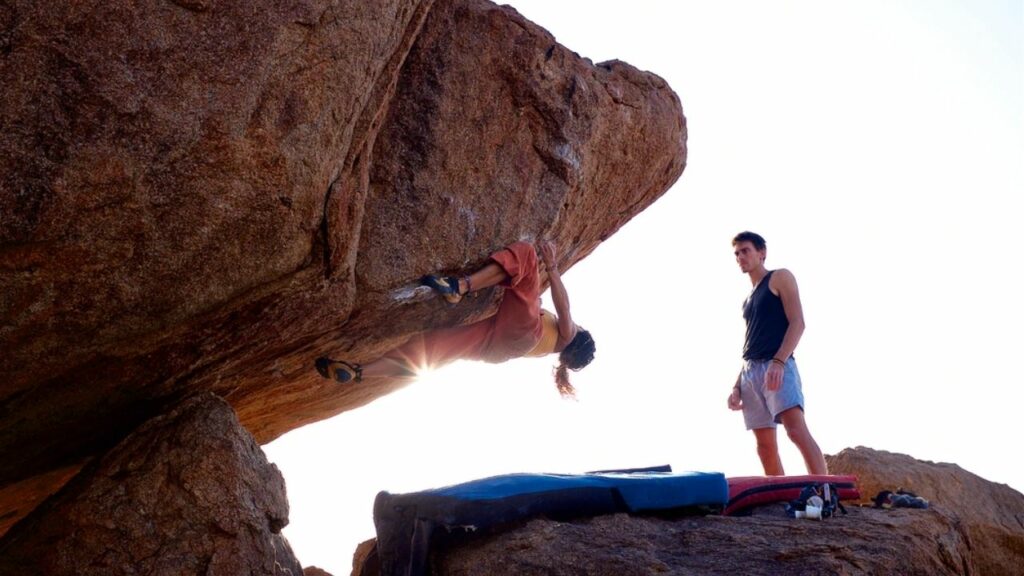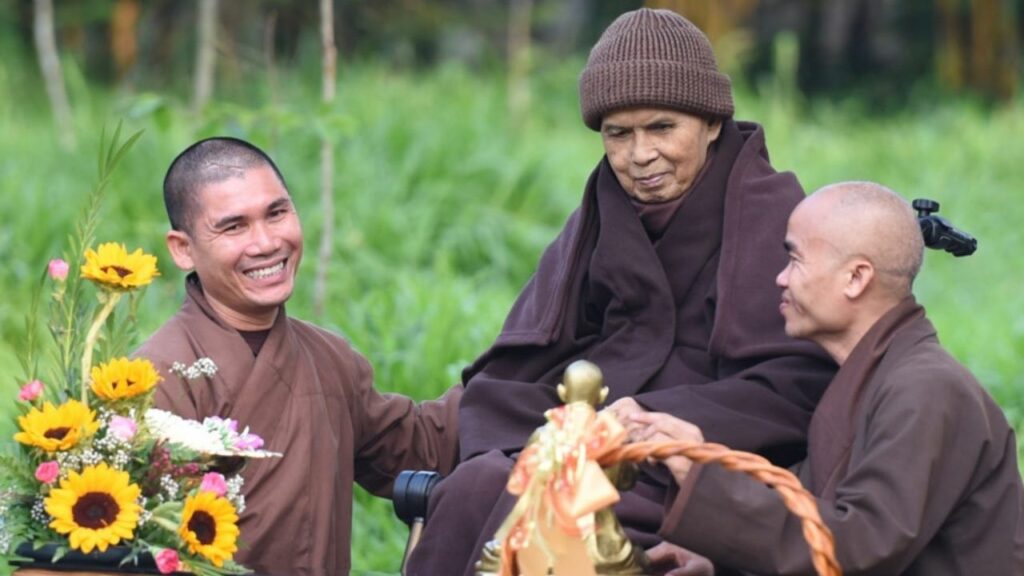A couple months ago, I randomly bought a book that caught my eye, The Miracle of Mindfulness by Thich Nhat Hanh. And miraculous it was.
I’m an avid climber, and even though meditation is quite beneficial, I always found it a bit mundane. But this book changed my mind. Hanh’s concept of mindfulness and “walking meditation” was just what I needed.
Ever since, I’ve been trying mindfulness while climbing through walking meditation, and I’m gonna tell you how climbers can improve by practicing mindfulness. And why non-climbing yogis should also try rock climbing.
The Concept of Mindfulness
Mindfulness is a state of mind where you focus your awareness on the ongoing activity while acknowledging the things within yourself – your feelings, thoughts, physical sensations, and more.
It has been used as a therapeutic technique for quite some time in the study of meditation and Ayurveda. Though there’s much more to it than just therapy and psychological healing. The concept is almost the opposite of flow state and climbing, yet they feel so similar in practice.
The flow state is a state of complete focus where you’re so immersed in the task at hand that outside noise is phased out. In comparison, mindfulness is a state of complete awareness, where you’re in control of how external factors affect you.
It’s a fantastic concept indeed, but how does that help your climbing skills?
Can mindfulness really improve your climbing?
Being who I am, I wondered if mindfulness really improved my climbing or if it was just a placebo effect.
In layman’s terms, the placebo effect is a unique concept where you treat yourself by tricking your body. For example, you use inert medication with no benefits (or side effects) and trick your body into healing itself. The short version is yes.
You can seriously improve your climbing and bouldering skills by practicing and implementing mindfulness. It’s not a placebo effect. Mindfulness works even better for climbers and athletes who are experienced with the flow state.
1. Importance of Mindfulness for Climbers
Suppose your physical body is trained and now quick enough to even dodge bullets. Would you be able to do that in a practical situation? No. Signals from your brain travel at 250-268 miles per hour, while a bullet can go as fast as 1800 miles per hour.
Even if you can see the bullet coming, the signal would never reach your legs in time. In short, everything boils down to how strong your mental game is.
That’s why we see experienced pro players beating amateurs with a better skill set. The former has a stronger mental game because of years of performing under stress and extreme conditions.
The same principle applies to people who practice mindfulness but don’t climb. Getting into an activity as intense and extreme as sports climbing will help you further train your mind and body and enhance your zen state.

2. Benefits of Mindfulness for Climbers
One of the most critical skills needed for climbing is quick thinking and decision-making. Unfortunately, you won’t have the luxury to think a lot when hanging several dozen feet above the ground. Mindfulness helps you with that state of anxiety and panic.
- Mindfulness stabilizes your breathing and then enhances it further. The amount of oxygen in your brain directly affects your ability to think.
- Focus and balance are also improved because you’re fully aware of the little details like the tiny cracks (or holds) around you, the resting position of your foot on the rock underneath, the posture of your body, and the precise visualization of your next few steps.
- Forgetting about conserving your energy is another big mistake amateur climbers make. This is done through bad postures, over-gripping small holds, building fatigue, and more.
- Mindfulness (and other meditation techniques) improve memory. And having more knowledge and experience will make your next challenge easier.
- It keeps your body in check. The biggest cause of sports injuries is not the difficulty of the activity, but athlete’s lack of awareness about their body’s limits. The concept of mindfulness throws that out of the window because you’re always aware of your body, almost as if you were talking to your nerves while climbing.
- Dealing with losses is probably more complicated than learning climbing itself. Mindfulness brings out a truly positive outlook and helps you learn from your mistakes rather than drowning in them.
- Mindfulness helps you live every moment by teaching you to focus on the ongoing task rather than the outcome. Sometimes, the journey is more important than the destination, after all.
Katherine A. Wheatley from Nottingham Climbing Centre, University of Nottingham (UK) did a controlled study on exploring the relationship between mindfulness and rock-climbing. And the results were noteworthy: “This study provides the first evidence that rock climbing increases mindfulness.”
3. How long does it take for the improvements to become noticeable?
The number is somewhat arbitrary and heavily subjective. It took me a couple months, but I had never dabbled in meditation in the first place.
In comparison, my climbing partner saw his improvements (positive attitude, quicker and decisive thinking) in a few weeks. Nonetheless, the improvements I saw were worth the wait and effort.

4. How to practice mindfulness?
- Find Somewhere Quiet
Go to a place where it’s quiet, and you can be alone with your thoughts. Along with the apparent no distractions rule, it needs to be comfortable enough for you. - Get To Know Thy Self
Close your eyes and focus on knowing your own body. Try to become aware of yourself from head to toe. - Breathe In, Breath Out
Mindfulness isn’t just breathing. Here you try to become aware of your breathing patterns instead of blindly following a rhythm. Notice the small sounds and focus on the sensation of air gushing in and out of your lungs. - Know Your Thoughts
While meditation asks you to clear your mind, mindfulness requires you to hear what it wants to say. Listen to the random thoughts that come to your mind and understand them while focusing on your breathing. - Become An Impartial Observor
“An empty mind is a devil’s workshop” – we often keep ourselves busy to avoid facing our inner thoughts. Of course, every thought while practicing mindfulness won’t be a good one, but you must not judge. Focus on breathing and hearing your mind. - Return
The idea is to not treat mindfulness as a “state” instead of an activity. Don’t just stop breathing and open your eyes. Instead, feel the sensation of returning to the real world after having a deep conversation with yourself.
The last two steps are the real deal and take some practice, but the outcomes are exceptional.
Thich Nhat Hanh’s Walking Meditation & Mindfulness
Thich Nhat Hanh, or simply “Thay,” is a Vietnamese monk and Zen master who is famous for his modern and interesting take on the concept of meditation and mindfulness.
Thich Nhat’s favorite pastime is practicing mindfulness through “walking meditation.” So, instead of sitting, you’d just be doing everything while walking (and a couple more steps).
Think of it as the advanced version of mindfulness.
1. What is walking meditation?
Thich Nhat Hanh believes walking meditation to be a profound way of deepening our body’s connection with Earth. His concept asks you to cherish each step you take through breathing and mindful thinking.

Do not rush – take each step mindfully and think about how the next one brings you back to “home” (ground or Earth). Nhat teaches people to feel the energy flowing between the ground, and to feel the gratitude of being alive, breathing the air, and lastly, being able to walk.
Unite your mind and body both visually and spiritually by using each step as a way of grounding your thoughts and reeling them back into your body. That’s walking meditation.
2. Can you mix walking meditation with rock climbing?
Don’t think of this as a new concept. It’s similar to what Hanh did with meditation. He loves walking, so he trained his mind to the point where practicing mindfulness while walking became second nature to him.
Practicing mindfulness through “climbing meditation” is not impossible, but it can be difficult. It requires tremendous amounts of practice and experience with concepts like the flow state, mindfulness, and walking meditation.
I haven’t yet reached a complete state of mindfulness while climbing. I only focus on my breathing and being aware of my body. But seeing the benefits, I’ll try to slowly incorporate the awareness of my thoughts as well.
It’s like when you learn to climb, you don’t go to the most challenging route first. Start by practicing mindfulness and experiencing flow state, then go try walking meditation. And finally, try doing them while climbing.

